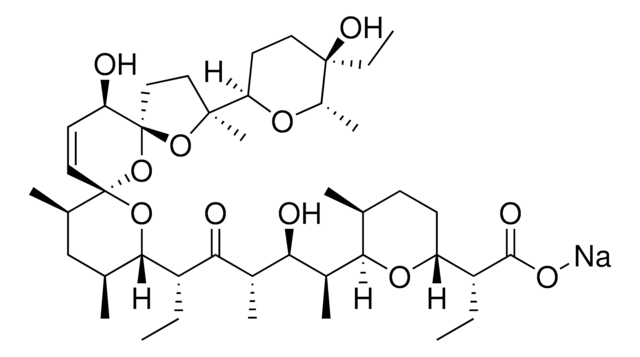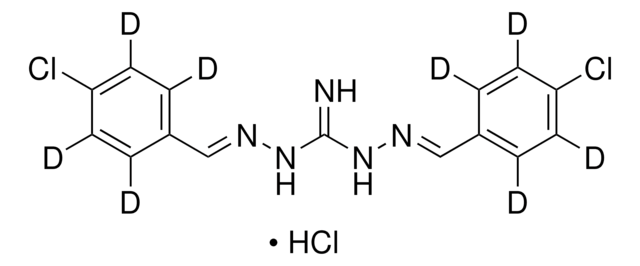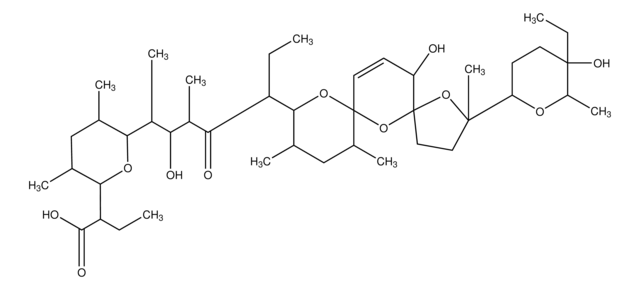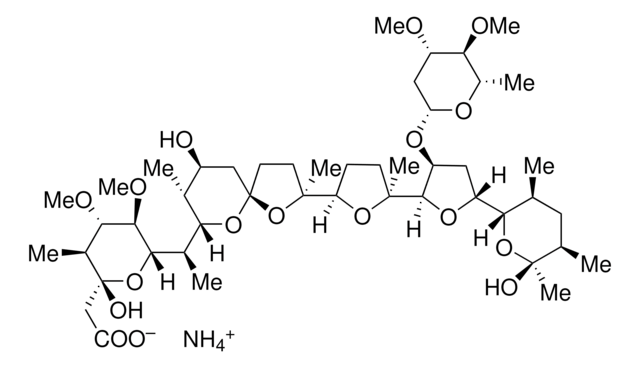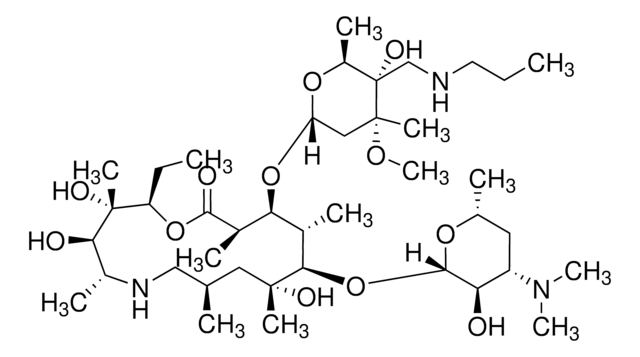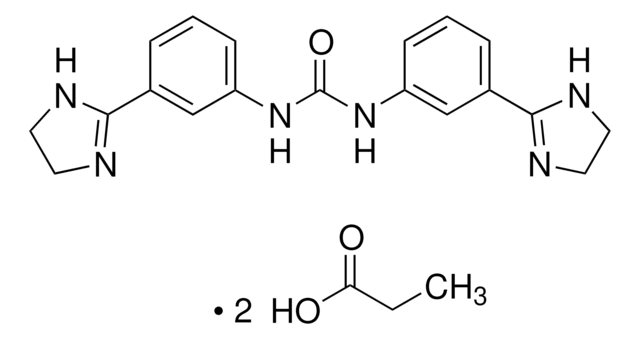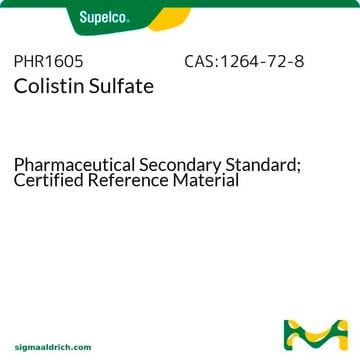33979
Robenidine hydrochloride
VETRANAL®, analytical standard
Synonim(y):
1,3-Bis[(4-chlorobenzylidene)amino]guanidine monohydrochloride
About This Item
Polecane produkty
klasa czystości
analytical standard
Poziom jakości
linia produktu
VETRANAL®
okres trwałości
limited shelf life, expiry date on the label
metody
HPLC: suitable
gas chromatography (GC): suitable
Zastosowanie
forensics and toxicology
pharmaceutical (small molecule)
format
neat
ciąg SMILES
Cl[H].Clc1ccc(cc1)\C=N\NC(=N)N\N=C\c2ccc(Cl)cc2
InChI
1S/C15H13Cl2N5.ClH/c16-13-5-1-11(2-6-13)9-19-21-15(18)22-20-10-12-3-7-14(17)8-4-12;/h1-10H,(H3,18,21,22);1H/b19-9+,20-10+;
Klucz InChI
LTWIBTYLSRDGHP-HCURTGQUSA-N
Szukasz podobnych produktów? Odwiedź Przewodnik dotyczący porównywania produktów
Powiązane kategorie
Opis ogólny
Zastosowanie
Informacje prawne
produkt powiązany
Hasło ostrzegawcze
Warning
Zwroty wskazujące rodzaj zagrożenia
Zwroty wskazujące środki ostrożności
Klasyfikacja zagrożeń
Acute Tox. 4 Oral
Kod klasy składowania
11 - Combustible Solids
Klasa zagrożenia wodnego (WGK)
WGK 2
Temperatura zapłonu (°F)
Not applicable
Temperatura zapłonu (°C)
Not applicable
Środki ochrony indywidualnej
dust mask type N95 (US), Eyeshields, Faceshields, Gloves
Choose from one of the most recent versions:
Masz już ten produkt?
Dokumenty związane z niedawno zakupionymi produktami zostały zamieszczone w Bibliotece dokumentów.
Klienci oglądali również te produkty
Nasz zespół naukowców ma doświadczenie we wszystkich obszarach badań, w tym w naukach przyrodniczych, materiałoznawstwie, syntezie chemicznej, chromatografii, analityce i wielu innych dziedzinach.
Skontaktuj się z zespołem ds. pomocy technicznej